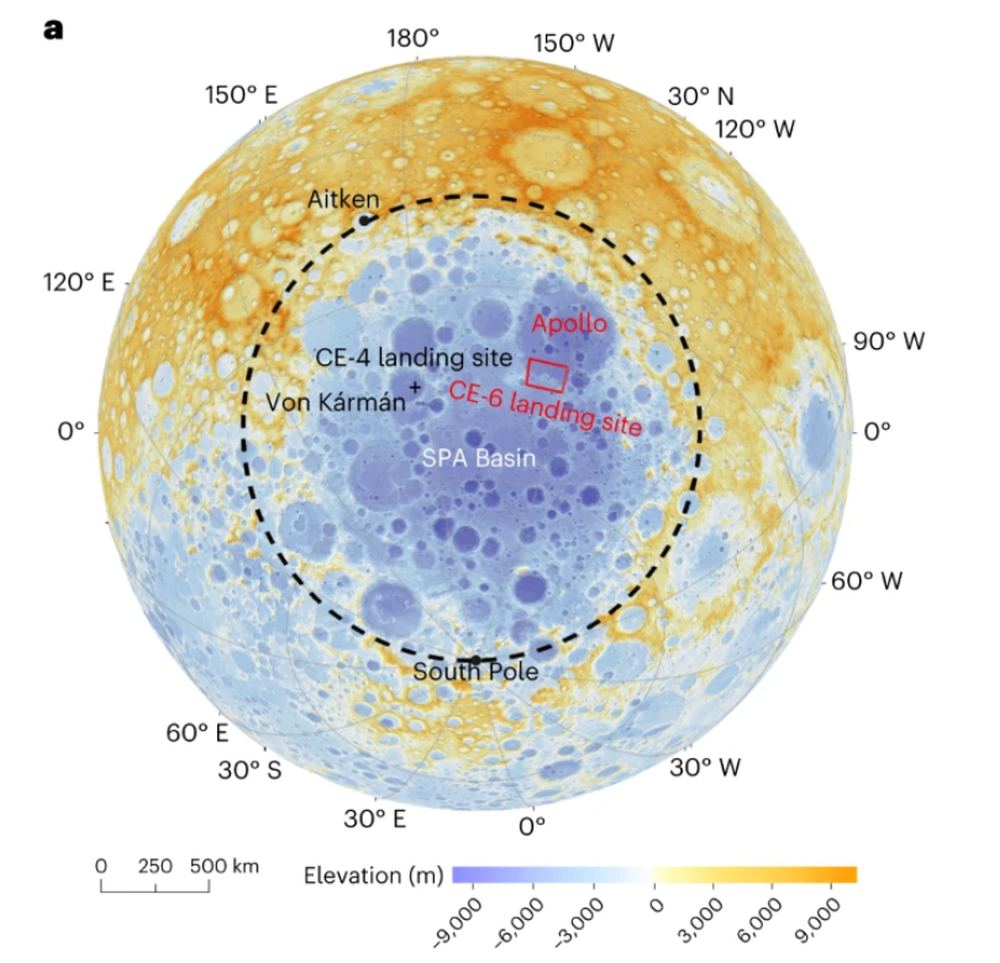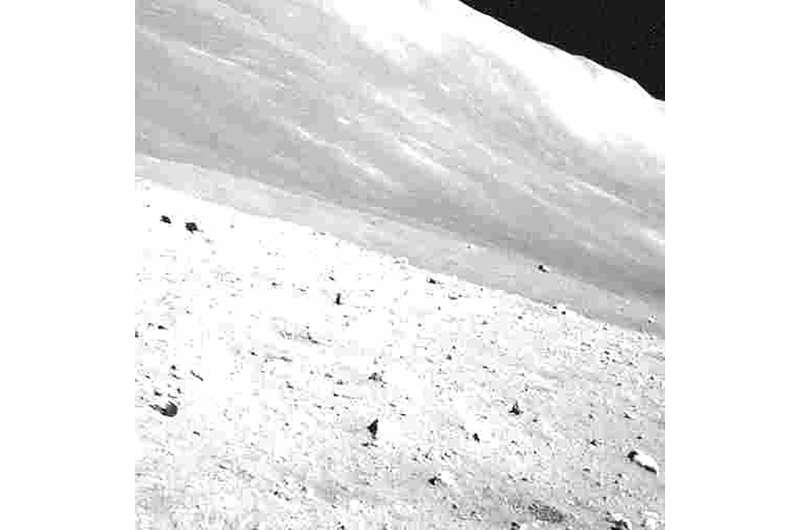Our Moon is shrinking and has been doing so since just after its formation ~4.5 billion years ago from a collision with the young Earth. That shrinkage, along with a constant rain of micrometeorites, causes lunar seismic activity. NASA plans to send two instruments to the Moon to measure its moonquakes. Those dual seismometers share technology first used on Mars by the InSight lander to measure more than a thousand marsquakes.
Continue reading “Two Seismometers are Going to the Moon to Measure Moonquakes”Chinese Probe Collects Moon Samples and Heads for Earth

China says its Chang’e-6 spacecraft has gathered up soil and rocks from the far side of the moon and has lifted off from the surface, beginning a journey to bring the samples back to Earth. The probe’s payload represents the first lunar samples ever collected from the far side.
In a status update, the China National Space Administration said the Chang’e-6 ascent module successfully reached lunar orbit, where it’s due to transfer the samples to a re-entry capsule hooked up to the probe’s orbiter. (Update: CNSA says the ascent module made its rendezvous with the orbiter and transferred the samples to the re-entry capsule on June 6.)
If all goes according to plan, the orbiter will leave the moon’s orbit, head back to Earth and drop off the re-entry capsule for retrieval in China’s Inner Mongolia region sometime around June 25.
Continue reading “Chinese Probe Collects Moon Samples and Heads for Earth”Chinese Probe Lands on Moon’s Far Side to Collect Samples for Return
After touching down on the moon’s far side, China’s Chang’e-6 lander is collecting samples to bring back to Earth — and sending back imagery documenting its mission.
Chang’e-6, which was launched May 3, went through weeks’ worth of in-space maneuvers that climaxed with its weekend landing in the moon’s South Pole-Aitken Basin region. The mission plan calls for the probe to collect samples of lunar soil and rock over the course of about two days, and then pack them up for the return trip.
If the operation is successful, Chang’e-6 would bring back the first fresh lunar samples ever collected on the moon’s far side — following up on the Chang’e-5 mission in 2020, which returned samples from the moon’s Earth-facing side.
Continue reading “Chinese Probe Lands on Moon’s Far Side to Collect Samples for Return”A New Way to Make Precise Maps of the Lunar Surface
There was a time when maps of the Moon were created from telescopic observations and drawings. Indeed Sir Patrick Moore created maps of the Moon that were used during the historic Apollo landings. Now researchers have enhanced a technique to create accurate maps from existing satellite images. Their approach uses a technique called ‘shape-from-shading’ and involves analyzing shadows to estimate the features and shape of the terrain. Future lunar missions will be able to use the maps to identify hazards on the surface making them far safer.
Continue reading “A New Way to Make Precise Maps of the Lunar Surface”How Much Water Would a Self-Sustaining Moonbase Need?
As humanity returns to the Moon in the next few years, they’re going to need water to survive. While resupplies from Earth would work for a time, eventually the lunar base would have to become self-sustaining? So, how much water would be required to make this happen? This is what a recently submitted study hopes to address as a team of researchers from Baylor University explored water management scenarios for a self-sustaining moonbase, including the appropriate location of the base and how the water would be extracted and treated for safe consumption using appropriate personnel.
Continue reading “How Much Water Would a Self-Sustaining Moonbase Need?”Lighting Up the Moon’s Permanently Shadowed Craters

The Moon’s polar regions are home to permanently shadowed craters. In those craters is ancient ice, and establishing a presence on the Moon means those water ice deposits are a valuable resource. Astronauts will likely use solar energy to work in these craters and harvest water, but the Sun never shines there.
What’s the solution? According to one team of researchers, a solar collector perched on the crater’s rim.
Continue reading “Lighting Up the Moon’s Permanently Shadowed Craters”Here’s Where China’s Sample Return Mission is Headed

Humanity got its first look at the other side of the Moon in 1959 when the USSR’s Luna 3 probe captured our first images of the Lunar far side. The pictures were shocking, pointing out a pronounced difference between the Moon’s different sides. Now China is sending another lander to the far side.
This time, it’ll bring back a sample from this long-unseen domain that could explain the puzzling difference.
Continue reading “Here’s Where China’s Sample Return Mission is Headed”Lunar Explorers Could Run to Create Artificial Gravity for Themselves

Few things in life are certain. But it seems highly probable that people will explore the lunar surface over the next decade or so, staying there for weeks, perhaps months, at a time. That fact bumps up against something we are certain about. When human beings spend time in low-gravity environments, it takes a toll on their bodies.
What can be done?
Continue reading “Lunar Explorers Could Run to Create Artificial Gravity for Themselves”Japan’s Lunar Lander Survives its Third Lunar Night
Space travel and exploration was never going to be easy. Failures are sadly all too common but it’s wonderful to see missions exceed expectations. The Japanese Space Agency’s SLIM lunar lander was only supposed to survive a single day but it’s survived three brutal, harsh lunar nights and is still going. The temperatures plummet to -170C at night and the lander was never designed to operate into the night. Even sat upside down on the surface it’s still sending back pictures and data.
Continue reading “Japan’s Lunar Lander Survives its Third Lunar Night”Here’s Why We Should Put a Gravitational Wave Observatory on the Moon

Scientists detected the first long-predicted gravitational wave in 2015, and since then, researchers have been hungering for better detectors. But the Earth is warm and seismically noisy, and that will always limit the effectiveness of Earth-based detectors.
Continue reading “Here’s Why We Should Put a Gravitational Wave Observatory on the Moon”



